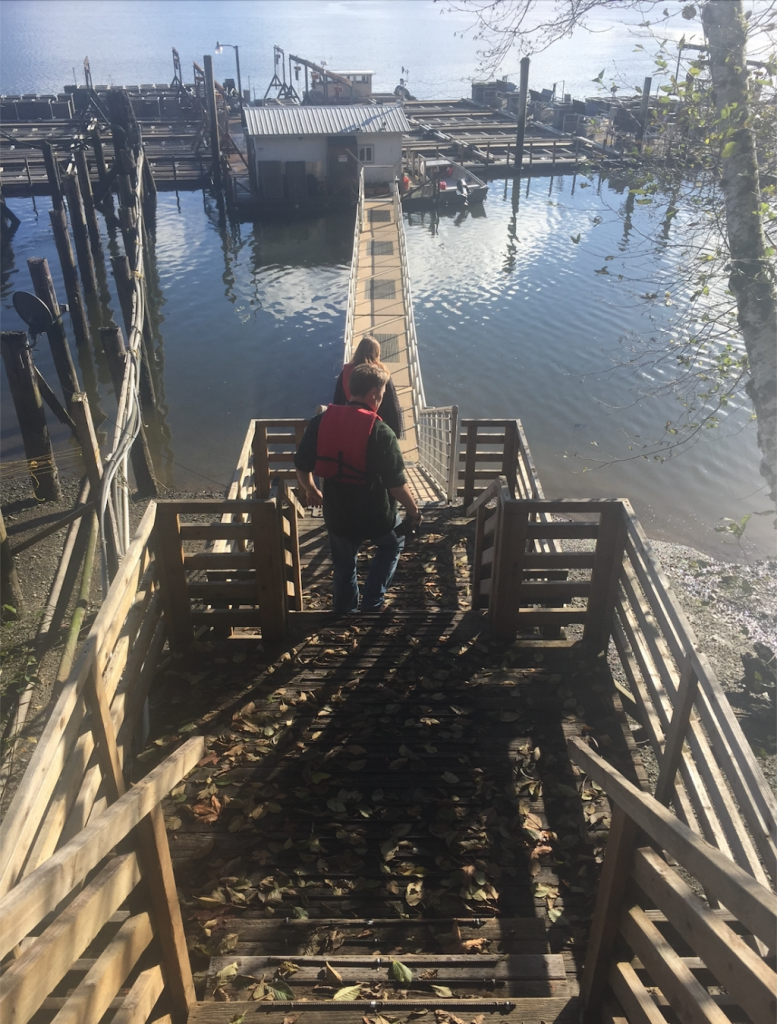In late June, an unprecedented heat dome settled over the Pacific Northwest. Three straight days of triple-digit temperatures smashed record highs from Oregon to British Columbia and put the region and its vast tracts of shellfish farms in the boiler.
Seattle had its hottest day ever on Monday, June 28, registering 107 degrees F. The previous record? It was the day before, when the historically temperate city slogged through a swampy 104 degrees. A few hours down the coast, Portland, Ore., hit 116 degrees, hotter than it’s ever been in “hot” cities like Dallas, Los Angeles and New Orleans. A couple hours north, Vancouver, B.C., reached an unconscionable 121 degrees.
To make matters worse, the heat dome — which meteorologists attribute to ocean warming caused by climate change — coincided with an extremely low tide that left shellfish to cook in the sun. The Atlantic reported that biologists in Canada estimated a massive die-off of “billions” of intertidal creatures on British Columbia’s beaches, where thermal imaging recorded shoreline temperatures up to 125 degrees.
Meanwhile, gulls were having a heyday picking at the stinking, stewing meat of gaping oysters and clams at aquaculture farms in Washington state, the nation’s largest shellfish producer with more than 300 farms turning out around $108 million in annual farmgate value, according to the Pacific Shellfish Institute.
Most shellfish growers in Washington reported some mortality in clams and oysters, but the consensus was that the full extent of the damage caused by the extreme heat won’t be known until growers see clearly what percentage of their seed was zapped.
Bill Dewey of Taylor Shellfish, the largest shellfish producer in the United States, confirmed that they lost around 2 million clam seed planted in shallow Samish Bay, a large growing area on the northern end of Washington’s coast. State health officials later recalled Samish Bay oysters and shut down production there for more than a month after an outbreak of vibriosis, poisoning from the vibrio bacteria, which grows quickly in shellfish when they heat up.
Dewey added that some of Taylor’s temperature-sensitive Olympia oysters were torched, but said so far the damage had not been crippling.
“There have definitely been clams and oysters killed on our farms, but there hasn’t been anything catastrophic yet,” he said.
Taylor was aided by the fact that most of its farms are in deeper water with muddy bottoms. Dewey said the intertidal oysters and clams that sit up higher were hit harder by the heat wave, as were gravel or rock bottom beds that go dry when the tide recedes. The rocks, gravel, and dark oyster shells themselves heat up, causing temperatures inside the shells to shoot up well above air temperature.
In such intense heat, Dan Wilson, the vice president of Olympia Oyster Co. in Shelton, Wash., said reports of oysters cooking in their beds were not so far-fetched.
“They were damn near cooked. The kill temperature on most bacteria is around 145 degrees, and it couldn’t have been that far off,” Wilson said.
Wilson confirmed that his rock and gravel bottom beds fared poorly in the heat, while his company’s oysters and clams in muddier growing areas were saved by insulating sediment.
“I would say we had 20 acres severely affected,” Wilson said, adding that Olympia Oyster Co. farms around 150 acres. Wilson estimated his company also lost around 40 percent of their seed, which has repercussions down the line.
“It’s a big deal. Our turnaround is much longer than, say, plants. We’re about two and a half to three years to maturation, and in some areas four years. It’s harder for us to recover our crops,” Wilson said.
For many growers in the Pacific Northwest, the heat wave is another blow in a bruising stretch, coming on the heels of covid-19 restaurant shutdowns and an onerous new permitting process in Washington.
And Wilson added that while many of the big growers will be able to power through, he is concerned that the heat dome may have been the beginning of the end for some smaller aquaculture businesses.
“Some people were hurt much worse than us. A lot of the small growers got killed. They’re on rocky beaches and just don’t have the diversity,” Wilson said.
On top of everything else, in July, the Washington State Department of Health reported a record-high 75 cases of vibriosis, far more than the previous record of just 48 cases, set in July 2018. The situation, Wilson said, called for some good old farmer’s optimism.
“It’s farming. There’s always concerns. There’s always stress. Hopefully this will drive the price up so we can recoup some because there’s a shortage right now because of this. We’ll make it out,” Wilson said.







